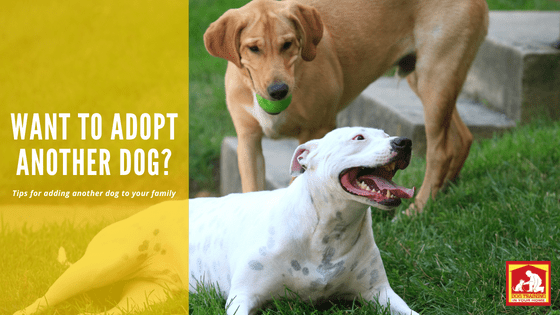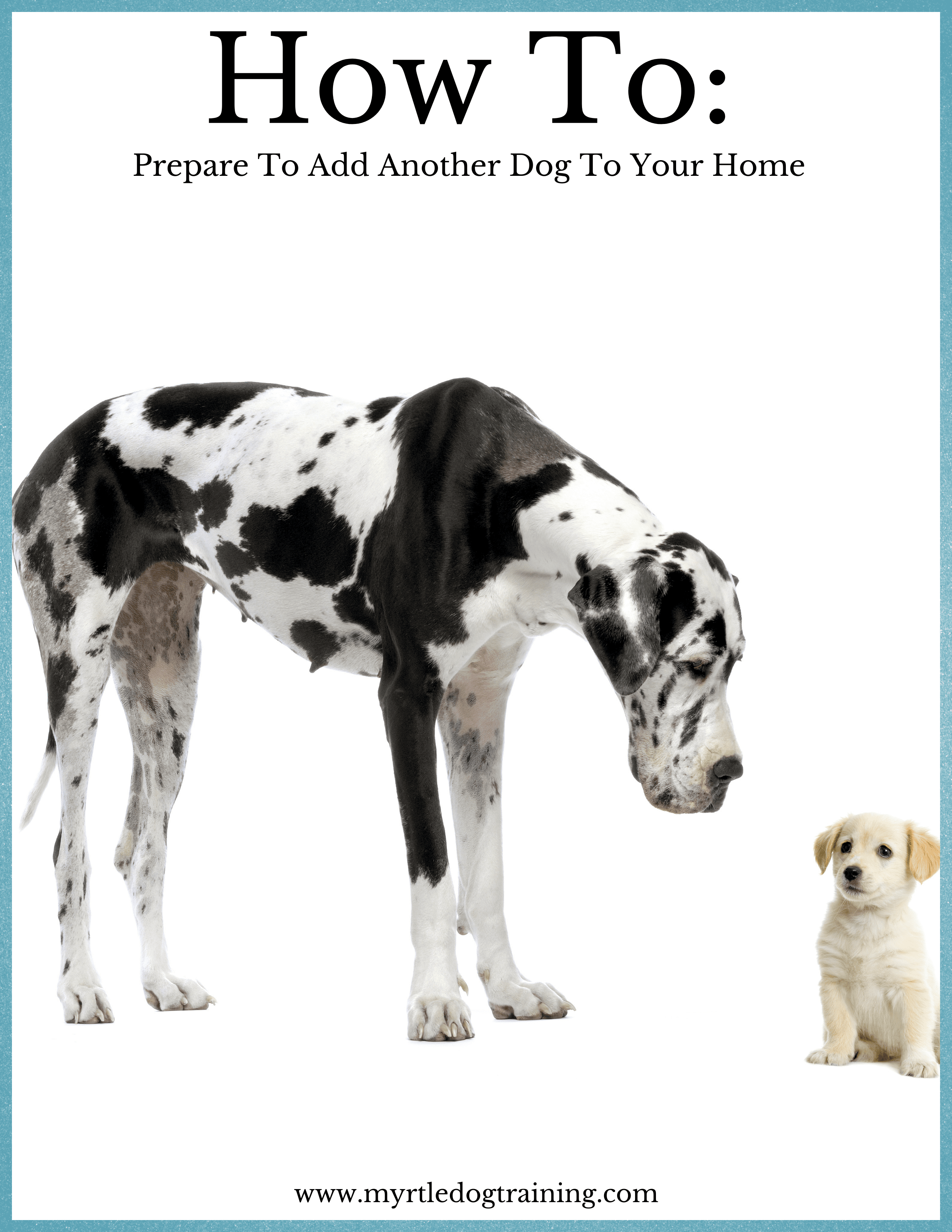
It’s Adopt a Dog/Adopt a Shelter Dog Month!
At some point or another, lots of dog owners consider adding another dog to their family. There could be a number of reasons why they want to: they recently lost one and their dog is used to having a buddy, their current dog has a lot of energy and a second dog would give him a playmate, the kids each want their own, they have an older dog and want a younger pup to help him “feel young” again…you get the idea ;-P Of course, you can always get another dog directly from a breeder, but since October is Adopt a Dog/Adopt a Shelter Dog Month, this post will focus on adoptions 🙂 (Most of these tips, however, can easily be transferred to buying a dog from a breeder).
Whatever the reason, here are a couple of things to consider before you make a commitment to adopt another dog:
- Do I want another dog? Make sure to be honest with yourself here. Are you getting another dog so your current one has a playmate? Or is the second dog to replace one you recently lost? Do you have the time and energy for another dog? If you currently have one dog now, and don’t feel like you have enough time for it, chances are adding another one in the mix will not help. You may think the dogs will wear each other out, but it is still twice the work/time/effort on your part. On the flip side – if you have lots of time to share with your dog(s) now, adding another one to the mix could really enhance your and their quality of life. One big thing to consider is your own dog’s personality and energy level; you want to find another dog that will compliment that – not go against it.
- Does my dog(s) want another dog? While we can’t really “ask” them, think about their history, temperament, etc. before deciding to add another dog to your home. Some dogs like being the “only child”, especially if they’ve had you all to themselves for a long time. If your dog is possessive over food, toys, beds, even YOU, he may not want to have another dog to “compete” with (although good training will help! At Dog Training in Your Home, we have helps LOTS of dogs get over their possessive tendencies) .
A few ways to tell if your dog is open to other dogs:
- Watch how your dog behaves around strange dogs.
- Utilize a friend and their well-socialized/trained dog and meet at a neutral location to see how yours reacts.
- Sign your dog up for a basic training class to refresh his manners and see how he does.
OK, so you’ve decided you’re ready to add another dog to your family. Now the hard part – finding the right one! These tips should help get you on the right track…
Related: 6 Tips to Adopt the Right Dog For You
Figuring out what dog is the right fit:
Breed matching: Whether you want the same breed, or a breed to compliment your current dog.
- Purebreds: If you have a favorite breed and want to add another, go right ahead. Most breeds like being with their own kind, so the transition may be easier. It can be easier for you, too – you already know the breeds’ temperament, personality, how it trains, health concerns, etc. Every breed has a rescue group, so you can still adopt the breed you love!
- Mixed Breeds: It gets more difficult if you have a mixed breed and want to introduce another mixed breed in your home. Mutts can be extremely adaptable, but it does depend on their temperament.
Related: Want to Adopt A Dog? Read These Tips First
Adding a different breed to the mix: Consider these tips before adopting another dog that are different breeds (or mixes):
- Size. While large and smaller dogs can get along, keep in mind a smaller dog might accidentally get hurt by the larger dog.
- Energy level. You want your dogs to be able to keep up with each other – whether on a walk or just playing in the yard.
- Temperament. It is smart to choose another dog (same breed or not) that has a similar personality to your current dog. However, sometimes pairing a shy or worrisome dog with a confident and easygoing dog can be beneficial for the first dog.
- Age. This kind of goes with energy level. Some recommend that if you want to bring a puppy in to your home, your current dog should be at least 3 or 4, and not younger than 1 year old. You need to have established a relationship with the first dog before bringing in the second one, so 6 months is a good time frame. Your older dog should be mannerly, well-adjusted, and spayed/neutered to avoid quarrels with a new puppy.
- Male vs. female. Most experts agree that dogs of opposite sexes get along better, especially if you have a dominant/territorial breed. If they are already dominant by nature, that escalates when another dog comes into their turf. If you have to have the same sex, two males are generally easier than two females. The males will jockey and fight for position in the pack, as will the females, but the females are in it to win so they don’t back down as quickly.
If you’re ready to add another dog to your family, grab our FREE download to help you prepare:
If you want a PDF version of some of these tips, simply send us your name and email and we'll send you one!
Need help introducing another dog to your family? We’ve had tons of success!
Call today: 843-360-6033 FIRST VISIT FREE!
Any age, Any breed; Veterinarian Recommended








